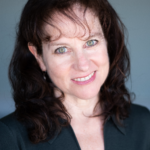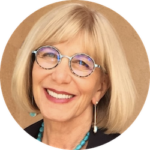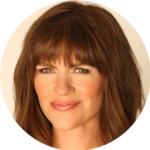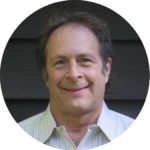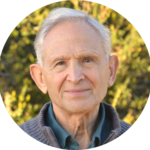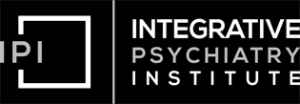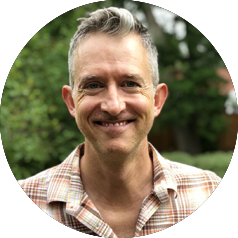A Conversation About One of the Oldest Personality Systems – Beatrice Chestnut – HPP 72
Learning who we are through understanding each of our personality types provides an interesting eyeview of how we are perceived by people around us. It encourages us to put ourselves under the lens and to be critics of ourselves.
This certainly brings answers to the questions relating to why we are treated in a particular way in different aspects in our lives from relationships, how we deal with struggles and challenges, and why we have these defensive mechanisms we constantly revert to in terms of dealing with trauma.
In today’s episode, we are deeply honored to be joined by one of the most authoritative leaders in the modern enneagram movement, a highly regarded author, coach and business consultant, and licensed psychotherapist, Beatrice Chestnut. Join us as we jump into the exciting conversation around the different personality types and why it’s important for us to learn who we really are and have greater self-awareness.
Show Notes:
The Enneagram: A Personality Framework – 02:50
“And by helping you understand some of these habits and patterns that you don’t even know you have, because they’re so familiar, it’s just like the air you breathe, it really helps people understand how they may be constrained by these patterns in ways they don’t see”
Understanding The Personality – 05:27
“we come in as a type. So, in other words, type is with us when we come into the world. We’re not a blank slate, as many of us know. And often, you can really see a person’s type very early on in their life”
The Personality: What’s Underneath? – 09:01
“we’re born into the life that we’re meant to live, it’s almost like, if you’re three, you’re going to have a childhood experience where you are sensitized to the message that achievement, accomplishment got positive reinforcement. And oftentimes, that’s what worked. It is the coping strategy”
The 9 Personality Types – 17:47
“there are three types that are centered in the head, and three types centered in the heart, and three types centered in the body. And also, each of these three groups of three types is structured in a central way by one of three core emotions of the human personality or ego, which is fear, anger, and sadness or grief at loss”
The Enneagram: What You Need To Know – 31:06
“it’s about going beyond the personality. But we need to understand the personality first before we can go beyond it. So the enneagram is really a map of psycho-spiritual development. The first part would be psychological, the next part would be spiritual, if you’re so inclined. The enneagram is sort of like the gift that keeps on giving”
Type Flexibility – 39:45
“So we would say yes, incorporate the healthy qualities of other types as a way of expanding beyond your sort of stubborn or unconscious way we have of stubbornly sort of seeing things the same way over time and not expanding, not learning different ways of coping”
Full Episode Transcript
SPEAKERS
Beatrice Chestnut, Keith Kurlander, Dr. Will Van Derveer
Beatrice Chestnut 00:00
We see sometimes that someone who’s had a lot of trauma lives life a little bit more from one of those two points, often the stress point. So, it’s almost like the structure of the personality has been under more stress than normal. And so that person, and especially when their trauma gets triggered, so maybe not 100% of the time, but much of the time, and the percentage can depend on the person and their history and kind of trauma, they can almost live life at the stress point more.
Keith Kurlander 00:37
Thank you for joining us for The Higher Practice Podcast. I’m Keith Kurlander with Dr. Will Van Derveer. And this is the podcast where we explore what it takes to achieve optimal mental health.
Keith Kurlander 00:54
Hey there. If you have ever really questioned what is the personality? Why do we have a personality? Are there categories of personality that we fit into? Can there be types of personality, for example. This episode is for you. This is all about the enneagram. And the enneagram, when I found this system, probably 15 years ago, it really helped me understand myself and how my personality operates in ways that I could learn about my personality and grow, and really become more effective with my personality type and gain insights into some of the strategies I was using in my personality to deal with challenges that I would encounter with people. So, the enneagram is a really powerful system in terms of personality type system. I think from all the ones I have looked at; the enneagram is definitely one of the ones that I would rely on the most in my life and with the people I work with. It’s just really powerful, really insightful, the information you can get from learning your type in the enneagram system and how you operate and how you heal is really second to none. I highly recommend it. If you have never been introduced to enneagram, explore it if you like what you hear in this episode. Beatrice Chestnut has been studying and working with the enneagram for 27 years. She’s one of the most authoritative voices and thought leaders in the modern enneagram movement. She learned about the system from the pioneering enneagram expert, David Daniels. She’s a licensed psychotherapist, a coach, a business consultant, and she has a PhD in communication and an MA in clinical psychology. Let’s welcome Beatrice to the show.
Dr. Will Van Derveer 02:50
Welcome to the show, Beatrice. It’s great having you. For those of you who are unfamiliar with the enneagram, then you’re in for a real treat here because we have one of the world’s experts on the enneagram, who published the book, The Complete Enneagram in 2013. And this book remains fresh and relevant for me, certainly is a classic in terms of enneagram theory. What would you say to the listeners out there who are unfamiliar with the enneagram as a framework? Can you tell us about this way of understanding the personality and how it became compelling to you?
Beatrice Chestnut 03:21
Yes. So I learned the enneagram way before I went to school to study psychology and become a psychotherapist. So that might be interesting to know that it’s really what got me interested in psychology. And the enneagram, basically, is a personality typology, that is a really powerful sense-making framework for understanding the human personality and how people both defend themselves when they’re growing up, and how that defensive self-structure creates both a way of getting along in the world, but also ultimately become self-limiting in adulthood, when we see through a particular lens and we operate in the world through specific patterns of thinking, feeling and behaving that are so familiar to us that we don’t know they’re there. So, the enneagram kind of shines a light on the habitual patterns and coping strategies of nine distinct personality types. And by helping you understand some of these habits and patterns that you don’t even know you have, because they’re so familiar, it’s just like the air you breathe, it really helps people understand how they may be constrained by these patterns in ways they don’t see. And because the personality type descriptions of the enneagram are so accurate, thorough and deep, that gives you a lot to work with both in terms of understanding patterns that tend to be pretty conscious, but also understanding blind spots and unconscious patterns. And as we know, as therapists know, a lot of what we do when we’re working in therapy is helping people understand their unconscious patterns and make them more conscious. And the enneagram is an incredible tool for that, because it sketches out such a helpful framework for understanding these specific patterns associated with the specific personality types.
Keith Kurlander 05:27
I don’t know if there’s different philosophical schools here, so correct me, because I don’t know a lot about this level of it. But does the enneagram overall philosophy state that a human being comes into the world with their type, and that is actually identifiable very early on? Or that type gets influenced in the first couple of years and they kind of come into their type in early childhood? Or how’s that framed?
Beatrice Chestnut 05:56
So that’s a really good question, I would say. So the enneagram model, one of the reasons why it’s so powerful is tied to ancient wisdom traditions. So the idea that even before we had psychology, per se, and that hundreds, maybe thousands of years ago, we still had the issue of human transformation. So there is a way this has been around for a long time. Now, that said, it doesn’t really have a specific teaching about what you’re asking. But as a psychotherapist, of course, I have my own theory that kind of goes along with the enneagram and my sense of it and this is confirmed by other people that have worked with the enneagram a lot, both spiritually and psychologically, is that we come in as a type. So, in other words, type is with us when we come into the world. We’re not a blank slate, as many of us know. And often, you can really see a person’s type very early on in their life. Like my nephew, who I’m very close to. I saw his type in him from early on when he was a child. Now, it’s not always so clear with all children but the theory we have, and I can’t really prove this, it’s more an operating theory that I find to be true and others have also, is that the type is with us from birth. That is really who someone is, is who someone is, as they come into the world. However, of course, early childhood experience also has a big role to play in how the personality manifests. In other words, I think my sense is that early childhood experience is both kind of the place where the personality kind of gets played out. But also, it has to do with how fixated or not a person’s personality is. In other words, if you have a lot of trauma and difficulty in your early experience, your personality almost has to be more rigid, because you needed to be more protected, because it is a self protective mechanism early on in life, there’s a way that the personality structure or defense mechanisms get really put in place in a more fixed way. Now, that doesn’t mean that the person can’t heal and grow just as well. And sometimes even in more ways than if you haven’t had a difficult childhood, but I think that childhood is more the place where your experience plays out as an interplay between sort of what you come in as, who you are, and how your environment treats you, and how you respond to that treatment. It’s almost like a dance between the child and that child’s early environment, or caretaker relationships. But it’s really my sense that we come in with the type and then, it’s not nature and nurture, of course, that nature needs nurture. An early childhood experience also tells a story about the evolution of that person’s type, but not from the point of view of forming the type; more from the point of view of beginning to put in place the lessons that the person needs to learn as part of their growth process.
Dr. Will Van Derveer 09:01
This brings up another question that I’ve had for a long time that I’m really eager to ask you about, which is this concept of kind of having a particular childhood environment that supports a particular pattern of coping. In my case, the pattern was supporting performance, or behaving in a way of sort of getting attention through achievement or performance. And I’ve come to understand that as a type three kind of environment. But one of the things that’s come up and the question I want to ask you is about if the type is already in the person as they’re born into the world, can there be sort of more of a true type underneath the kind of type of environment that would create a more superficial or coping type on top of that?
Beatrice Chestnut 09:56
You know, that’s not so much my sense is that the type is the type, like as you say, and it often is this way. And I have a little bit of almost a spiritual viewpoint about this, that not everyone needs to believe, it’s like we’re born into the life that we’re meant to live, it’s almost like, if you’re three, you’re going to have a childhood experience where you are sensitized to the message that achievement, accomplishment got positive reinforcement. And oftentimes, that’s what worked. It is the coping strategy. And so, it’s almost both. It’s like we come in with this central type that really charts our growth path in a way and that it fits with what worked in childhood as a coping strategy. And I have this similar story. I am two. And my coping strategy was to take care of my caretakers. So, they would take care of me and to try to gain approval as a way of surviving in the world. And that’s what works. My brother grew up and not exactly in the same environment, of course, because from his point of view, and from when he came along, it was different, but he’s a One. And so you can sort of see how that same environment although exactly, not exactly the same from his perspective for him, that one coping strategy works. So it’s sometimes hard to explain, but I really think that we do come in with our type and that’s the story and the path and unfolds for us.
Keith Kurlander 11:30
Yeah, that makes sense to me, and we’ll get into the types in a minute for the listener who’s going well, what are these types? So, I’m curious too, is it sometimes difficult to accurately type somebody? Let’s take a person who had a very challenging childhood experience. And they have a lot of mental health problems because of that, and a lot of trauma in their nervous system. And can their types sometimes almost appear like they’re a different type than they actually are just based on all the traumatic disorganization they have in their system and maybe actually mistype them? And going back to Will’s question like a deeper type, could it be that it’s actually like a mistyping? Because they appear one way based on all this trauma or something like that. But actually, their more inherent type is there, It’s just harder to tease out.
Beatrice Chestnut 12:21
Yeah, that’s a great question. And something I’ve been looking at a lot, because some of the work I do with people now, in the inner work retreats I do with my teaching partner, we work a lot with healing trauma through the lens of the enneagram. And here’s what I think so far. I think a few different things can happen that you can see when you work with someone who’s had a particularly traumatic experience in childhood; and so many of us have had childhood trauma, some, of course, more extreme than others. When someone’s had a lot of trauma, what we see is one of a couple different scenarios. One is that the person’s personality is like the defensive structure that it is, is there even more in force than you might see? For instance, let’s say you have a type six, and sixes are oriented toward coping with fear. So all sixes to some degree, and in different ways cope with fear and their main personality structure is centered around these coping strategies to manage fear in different ways. And so you might get a six, for instance, that has particularly strong anxiety, or panic attacks, because again, that defensive structure that is designed to deal with fear has really been triggered in that person’s life at a deep level. And so it’s almost like it’s extra defensive in the way that main type pattern operates. So that’s one scenario. Another thing I sometimes see, and you may know that each enneagram type is connected to two other types through the internal arrow lines of the diagram. The enneagram is like a nine pointed star inscribed in a circle. And if you look at each type, they all are connected by two internal lines to two other types. Now, one of those has typically been called the security point, and one has been called the stress point. We see sometimes that someone who’s had a lot of trauma lives a little bit more from one of those two points, often the stress point. So it’s almost like this structure of the personality has been under more stress than normal. And so that person, and especially when their trauma gets triggered, so maybe not 100% of the time, but much of the time, and the percentage can depend on the person and their history and kind of trauma, they can almost live life at the stress point more. And so for instance, you might get a three who normally the coping strategy would be more of like a workaholic, like getting more trauma. Sometimes with Threes, you’ll see them really not able to slow down; very achievement oriented and accomplishing a lot and not able to stop working. That’s one thing you might see. Another thing you might see is a movement to the nine stress points. So they might actually kind of have a collapse, or they can’t do anything, which would be kind of an example. And maybe that early childhood trauma gets triggered in adulthood through an experience that echoes that early experience. And you might see that trigger that person go from a super high functioning, you know, high functioning as we might call in the world. And of course, one issue for threes is their coping strategy is often reinforced. It’s rewarded by the culture, especially since America is a three culture. And so you might see a three who get triggered in a particular way, kind of almost have a collapse where they can’t operate at all. Like sometimes, you’ll have a three that just one day can’t get out of bed. And they’re kind of like depression that is an immobilizing depression. And so that might be an example. So sometimes you might see and usually the beauty of the enneagram is you can almost describe it using the symbol. Sometimes you might see them going against the arrow which we would call the security point. And the security point is a little bit like a regression to childhood and so you could see a movement there. I think it’s a little bit less common but almost like looking for something to hold on to kind of trauma response like a regression to childhood; or maybe there was a way that person found to comfort themselves that looks awful like acting out the point of that other point. So for instance, if we use a three example, again, instead of being, you know, very work-oriented, doing-oriented, almost not able to stop working and doing, you might see them go to six, which would be their security point, or maybe they just get more fearful, more anxious, really caught up in anxiety in a really strong way. That might be another kind of trauma response. But it’s really interesting that we usually see one of those things happening that it’s either sort of a doubling down on the main defensive strategy, to the point where it’s really strong, and it can create problems, or one of these different arrow lines, which is a kind of almost like a place. When we use these airline movements as a conscious growth development path, which is their main use when we’re using the enneagram as a personal growth tool, we use these two arrow lines to create balance. They’re almost antidotes for the main type. But another thing they are almost like release valves of stress. They can go to one of these two points when your sort of nervous system is under a lot of duress.
Dr. Will Van Derveer 17:47
So, it might be a good time for us to zoom out and maybe look at maybe one or two sentences on each of the nine types so that our listeners who are not familiar kind of get a little more of a sense of what we’re talking about here.
Beatrice Chestnut 18:00
Sure. And I always like to start, and especially since probably a lot of your listeners are psychologically savvy, I like to start with the three centers of intelligence, because the nine types of the enneagram are really grouped into three groups of three types each. The enneagram is based on the idea that humans have three centers of intelligence, which are ways of interacting with the world processing information from the outside world. It’s a little bit different than in the West. We tend to privilege the head center thinking. Our education system sort of teaches to the head. But in this system, which is a little more Eastern or Middle Eastern, the idea is that we have these three centers of intelligence, they’re co-equal. So, we all have a head that thinks, a heart that relates through emotions primarily, and empathy and connections with others, and a body-based center that’s about instinctual intelligence, or gut-knowing, or kinesthetic intelligence. And we all have all three centers. And these three centers are kind of like the operation bases of the personality. And although we all have all three, when we come into being in a personality, part of what defines us as being out of balance, and of course, the growth process charted by each type is one of becoming more imbalanced in different ways, in different dimensions. So, each of us, although we have these three centers, we tend to live more from one center than the other two. And this is part of what defines the personality. So, there are three types that are centered in the head, and three types centered in the heart, and three types centered in the body. And also, each of these three groups of three types is structured in a central way by one of three core emotions of the human personality or ego, which is fear, anger, and sadness or grief at loss. So, there are three body-based types, 8 9 and 1; and these types are associated with anger. And they each relate to anger in a different way. And again, when all of what I’m saying it’ll be important to remember that sometimes some of the way the personality actually plays out is unconscious. So, one type over does anger, one type under does it, and one types kind of in conflict with it. So, eights overdue angers. Their coping strategy is a lot based on strength and power. They often had the sense in childhood that they had to be strong too early, in other words, a sensitivity to being vulnerable in the world and that it’s not okay to be vulnerable. They have to somehow be strong too early. And so they deny vulnerability and overcompensate through expressing strength and power. And they have a sense of who has the power, are they using it justly or fairly? Do I need to intervene with my own strength and power to sort of even the scales, protect people who might need it? And a lot of the enneagram type is a lot about focus of attention. So, their focus of attention is on power, strength. Who has it, how are they wielding it? And when do I need to sort of express my power in the world? And again, it’s a lot about denial of vulnerability. So, a lot of what defines the types two is what they don’t pay attention to or what tends to remain unconscious until the person does inner work. So, nines, underdo anger, and it’s like they go to sleep to their anger, but there’s still anger types. And as we know, when we don’t feel emotions that are there, and of course, we all have anger as humans. It doesn’t mean the emotion goes away, it often means it leaks out in passive forms. So nines are defined in some ways by the fact that they’re not angry, even though they’re personality is shaped by their relationship to anger, but it’s more the anger that’s not there and the anger they go to sleep to. So it leaks out in passive-aggressive forms. Nine’s main coping strategy is to avoid conflict and create harmony in their environment. Oftentimes, this is the child who is overlooked or wasn’t heard and so they go along with the wishes and wills of others, it’s like don’t rock the boat go along with other people’s agendas. And in light of that, they tend to go to sleep to their own priorities, their own desires, you ask a nine what they want, they usually don’t know, especially if it’s about a personal priority. It’s like their attention goes out to the outside world and creates harmony out there; how are you doing? How can I harmonize with you? But their attention very much isn’t on the inside. And it’s almost like they can’t access their inner experience, because they’ve gone so much on the outside. So the one is also a body-based type, but it’s the one that’s in conflict with anger. One’s coping strategy is on seeing how everything could be perfect or ideal, and what’s actually happening doesn’t meet that ideal. So how things could be corrected or improved, right and wrong, good and bad. And of course, they want to be good and avoid making mistakes and do the right thing. And so all of that coping strategy motivates them to put a lid on anger, because ones often have a sense that anger is not good, or they have a sensitivity to the negative impact of how their anger might come out in the world. Now, they also tend to be very self-critical. Ones and have a big inner critic, sometimes critical of other people. And a lot of it is about the fact that they overdo self-improvement. And they tend to be quite harsh on themselves while thinking that’s sort of a normal way to be just to be a good person, you have to be sort of controlling or over controlling. And they tend to be very responsible, ethical, rule-following, but sometimes to their own detriment, because they create a lot of inner tension by putting a lid on and controlling their emotions and their impulses in the effort to be good. So then the heart types are two, three and four. Type twos and threes are what we might call shapeshifters. So they’re very highly attuned to their environments, and what their environment wants them to be. And they sort of automatically shift into that in order to get affection or admiration from the world. To some degree, twos, threes and fours are associated with sadness. And the sadness comes from a deep sense that I’m not loved for who I am, but for how I have to be to make other people like me or love me on the outside world. So I have to become something I’m not in order to get the love is kind of at the core of the heart types. And twos have this sense of wanting to be liked and wanting to please others as a way of being liked. And there’s a big unmet need for love underneath. Now, we all have that. But twos are sort of the prototype for that. And it’s as if I wasn’t loved for who I essentially am. But I’m loved for when I do things for people. I think Twos are misunderstood widely in the enneagram world for being helpers and givers. That’s sometimes what they’re called. But it’s not really about the helping and giving, it’s more about being liked or loved. And helping and supporting others is a vehicle for getting loved or being liked. So it’s more about how you feel about me? And what can I do to emphasize parts of myself and deemphasize other parts of myself so that you like me or love me. And so twos are oriented toward pleasing and helping as a way of engendering connection and positive rapport. Now threes do a similar thing only, instead of “Do you like me?”, they’re asking the question, sort of, do you see me as successful and competent? So it’s a little bit more creating an image of success, as opposed to being likeable. And so this is why threes tend to be a little more work-oriented. And they sort of unconsciously turn down the volume on their emotions, even though they are heart types, that they’re the center of the heart triad. So threes often get misunderstood as not being emotional. It’s not that they’re not emotional, it’s that part of their coping strategy is achieving, accomplishing, and doing so that they can have this image of being successful in whatever way they might need to. And to do that, like if you’ve tried to do a lot while being in a bad mood, you know, it doesn’t work. And so threes they do in part to run away from emotions or push emotions away. Now when threes stop and slow down, boom! Emotions come right up. And so, part of the coping strategy again is creating an image of success. And Threes read an audience really well, which by the way, is a heart function. They read in any environment. What’s valued here? And then they automatically turn themselves into that. And that’s the shape-shifting and it happens so automatically for three is that they often don’t know who they really are, because they identify with the different images that they’ve needed to have to, again, at an unconscious level, try to get the love that they want and need. And so fours go against that a little bit, and that they want to be authentic. And they want to be seen for being special and unique, sort of, as they essentially are. So for fours, it’s about being understood on their own terms and being authentically true to who they are. Now, fours are the most emotional, they are most in their emotions in a conscious way of any of the nine types. And sometimes they get negatively projected onto because of that. It’s almost like they’re in touch with pain and darker emotions more than any type. And because the rest of the types don’t necessarily want to be in touch with those emotions, they can sometimes project negative stuff onto fours, and I’ve seen it done everywhere, even in enneagram communities where you think they would know. Fours are very much in their emotions. Their focus of attention is more on the inside. So where’s Twos and Three’s attention is on the outside, like reading the audience to decide who I can be to create a positive connection and admiration in you, for fours it’s more about how I’m feeling on the inside, what I need and what I want to express in the world and engendering understanding of me in the outside world. Now often, they don’t feel understood. And so that can be something where they can end up feeling like there’s something wrong with me. So fours often have this sense of deficiency, they compare themselves to others a lot. And they can have this feeling like other people have something good that I’m lacking. So that can be an issue. Now five sixes and sevens are the head types. fives are the most introverted type of all types. And the most head based and the most mental I would say because they detach from emotions automatically. It’s like they retreat within the head. Oftentimes, fives had an experience of either being intruded upon or neglected. And so it’s like they go inside themselves and try to get by on very little to not need very much from the outside world so they can sort of stay inside and be mental and not engage in the world so much because it feels like the world depletes them of their precious resources, especially things like time and resource and energy. So fives can have kind of a scarcity mentality when it comes to their inner resources like energy. And so they kind of avoid emotional entanglements and demands made on them. And very intellectual, very oriented toward information and processing things intellectually analyzing, more of a mental type, and not very emotional. The sixes are what we call the core fear type. Five, six, and sevens, their personality styles are all, in part, reactions to childhood fear. Sixes, get vigilant. And again, sometimes sixes don’t recognize it as fear before they learn the enneagram. They just might say, Well, I’m just really good at being prepared, or I’m a good problem solver. But basically, they’re kind of looking for threats and risks so that they can prepare ahead of time in case the worst happens. Also a mental type, very good at analyzing, insightful, but looking for problems to solve, looking for threats, whether in people or situations, trust is an issue, coping with fear is a big issue of that type in different ways. And then the seven is the type that doesn’t really feel fear that much, will often say they don’t really feel fearful at all, although there can be an underlying anxiety or restlessness. This is a type that tends to look at the positive as an unconscious way of avoiding what feels negative. Now, underneath the seven is an unconscious fear of suffering, fear of getting trapped in an uncomfortable emotion and not being able to get out. And so because of that, they have a sensitivity to being limited in terms of what they think about, what they do. Sevens are very much about freedom, and being able to think about whatever they want to think about. They like having a lot of options. They’re very creative thinkers. They are sometimes called monkey minds, they can talk fast and think fast. But really jumping from one thing to another, it’s hard for them to sink into an experience in the moment because what if there’s an uncomfortable emotion there, I don’t want to feel I want the freedom to be able to get away from that. But again, that’s an unconscious thing. Mostly, what’s conscious for sevens is their attention goes to that bright, shiny object, the next interesting thing to think about, the next pleasurable opportunity, or fun thing to do, or adventure or something like that.
Keith Kurlander 31:06
Great, thanks! That was a great explanation. So I’m a type six with a very strong five wing. And that’s been very useful for me. The knowledge of this has been very useful for just understanding my life and how I interact and making sense of things in my life. I’m interested to hear from you about if someone takes a really deep dive into enneagram, which I haven’t spent years, just really exploring it deeply, what are some of the purposes of the enneagram? Is it to optimize the personality? Is it to see where you might best fit in society in terms of career? Like, what are the multiple ways that someone who really would dive deep into this, to use this? What can be achieved by going very deep into the enneagram?
Beatrice Chestnut 31:58
Great question. So it’s about learning about the personality to learn about what you are not. So it’s about going beyond the personality. But we need to understand the personality first before we can go beyond it. So the enneagram is really a map of psycho-spiritual development. The first part would be psychological, the next part would be spiritual, if you’re so inclined. The enneagram is sort of like the gift that keeps on giving, like, the more time you put into learning about yourself and learning about the system, the more it has to give you. But it’s really sort of what you want out of it. Some people just want maybe spiritual, maybe psychological growth. Some people may want to use it as a spiritual tool. It’s a little bit like Ken Wilber where he brought together Freud and the Buddha, and he said that really, if we think about the whole transpersonal path of development, we need to do our psychological work first. And then once we do that, we have the opportunity to do spiritual work, which is basically going beyond the personality, but going beyond our psychology. So I think of it as a grand theory of psychological-spiritual development. And I knew the enneagram before I went to school. I had known it for six years before I went to school to study psychology. And as I went through and studied different psychological theories, and psychotherapeutic approaches, what I found is you can fit them all into the enneagram. Now, I also love enneagram because you can talk about it in purely psychological terms, in purely spiritual terms, and both at the same time, or neither. Sometimes when I go into businesses and use it as a tool for leadership development, or for professional development, I just use practical language. And I try not to use psychological or spiritual jargon, because I think sometimes that can get in the way because people have meanings they’ve associated with different ideas and terminology. But I would say the main purpose of the enneagram is to use knowledge of your personality, or in other words, study the way you operate in the world, gain a lot of insight into that to the point where you can work through issues, heal traumas, evolve and grow, and through understanding what you’re not. So the idea behind the enneagram is that we have mistakenly identified with a personality thinking that’s all of who we are. It’s what we developed to survive in the world. But once we get to adulthood, it becomes almost like an invisible prison. And sometimes the reason why people come to a personal growth path or come to therapy, is because something’s not working their life. They’re doing the same thing over and over again, and they’re stuck, or they can’t solve a persistent problem in their life, or there’s a big breakup or a death or some big shock to the system, and they can’t cope anymore. And it’s because they need to go beyond the coping strategy that they use that’s helped them survive in childhood, but that isn’t really working anymore. Because we really need to go beyond the relatively narrow viewpoint of the personality if we want to grow to our fullest potential. It’s sort of like the personality gets us to our 20s. And then after that, it’s almost like using knowledge of the personality as a vehicle or a teacher to go beyond it. And that’s where we really come into our full flower. In my book, The Complete Enneagram, I use the metaphor of an acorn. And the acorn needs to go into the ground and allow the shell to break open to allow the seed of the oak tree to emerge. And I use a parable in my book about sort of one thing people are tempted to do when they do either psychological work or working with a personality is use tools to sort of burn it, sort of brush up or polish up their personality to have a more effective personality structure. But what the enneagram model tells us is, when we’re in personality work, it’s like we’re seeing 360 degrees of reality through this narrow slice. We only see a certain percentage of reality because we’re looking through this limited lens that has to be limited because again, our psyches when we’re growing, we can’t handle all the information. We can’t understand things all these different ways. We can’t tolerate all these different emotions and we need to have this narrower structure but as we grow, we need to break out of that, and this is why Jung talked about doing Shadow Work. We need to confront the unconscious tendencies or the blind spots associated with our personality, the things we haven’t been able to see, so that we can grow beyond it and have a 360 degrees view of reality and what’s possible for us. So by letting go of the structure of the personality, which again, isn’t easy, because it means facing pain that the personality developed to shield us from having to experience in childhood. When we face that pain, it’s like we don’t have to run away anymore. The personality has no reason for being any more, because we’re saying, okay, we’re now consciously willing to do the conscious suffering, to grow beyond and work through any issues that we couldn’t work through earlier. But now, by working through those, we go much beyond and let go of the personality, defense mechanisms and coping structures that we just don’t need anymore. And that by throwing those off, that is the means of our growth. It’s almost like we use that as a launching pad into realizing more of our higher potential.
Dr. Will Van Derveer 37:46
Well, first of all, I think Keith and I really resonate with the perspective that personality is a vehicle for kind of delivering the capitalist self, if you will, the Jungian transpersonal self into the world, protecting us from the perils of childhood. And I think that there’s this interesting problem that Keith and I have found in part of what our stand is, with the integrative psychiatry Institute is to help practitioners get beyond the notion that a more polished ego is the pinnacle of human achievement, and to sort of help them get in touch with this more transpersonal Jungian perspective, that there’s a whole world of development and meaning that happens above and beyond ego development. And one of the things that has really been useful to me with the enneagram is having a roadmap for that understanding of what those meaningful challenges are going to be, in my own development, as opposed to, I think, before I encountered the enneagram was kind of a sense of challenges coming toward me, and not really being able to discern, okay, what are the developmental challenges for me and my type versus the challenges that are less inspiring to me that might actually be less meaningful in my development?
Beatrice Chestnut 39:01
Yeah, exactly. It’s exactly that. It’s a roadmap for understanding, first of all, that not everybody needs the same thing when you’re developing. Right? It’s an individualized or customized approach to development. It’s like you as a three are going to need something different than someone who’s a seven, or five or an eight. And knowing what those things are, and what they are at different stages of development, like at the beginning of a growth path, if someone’s really new to it, they’re going to need something different, depending on their type. And they will, after they’ve worked on certain issues, it’s like a kind of unfolding developmental path that really gives you a lot of information about what you need to do, depending on what type you are.
Keith Kurlander 39:45
I also wonder about, like, we talked about how trauma can sometimes muddy the waters of seeing the person’s type. And then on the flip side of that, something I’ve noticed, and I’m not, again, I haven’t studied the enneagram enough to know if this is true for other people who have but something I’ve noticed is very evolved people seem to be more flexible in their personality and more types may show up in terms of their flexibility. So I’m kind of thinking about, let’s say, if we bring in something like internal family systems where we have aspects of the ego that are alienated, and over time, there’s the possibility of very integrated ego. And there’s a lot of flexibility from different parts having their purpose in the world. I was wondering about from the enneagram perspective, as we get more developed, over time, does different types, even if it’s not where the person’s baseline is, do these different sorts of qualities of types show up in the person with more flexibility when there’s more development, and sort of like, for me, like my type six personality, it’s not. At least when we talk about more of the pathological, for lack of a better word, neurotic aspects show up a lot less and I think that there’s a lot of qualities of all the types that are popping out more often. Yeah. Wondering what you would say to that?
Beatrice Chestnut 41:15
Yes, I would say that’s really true. I think, as most people who are in the therapeutic world know, a mark of health is being more flexible, not being so easily triggered, not getting defensive, being more integrated. And all of these exactly are the same kinds of markers of health you’d see if you were using the enneagram as a tool. And yes, one way to think about it is becoming more whole, becoming more integrated, having the different parts of us be more conscious so that we can say, oh, in this situation, I tend to get triggered in this way. And here I go again, and just having so much consciousness and so much internal space to be able to see that you can understand that about yourself. And yeah, another way to think about it is that the enneagram circle is a model of wholeness. And the way that we’ve focused on just a narrow slice of reality instead of the whole thing, or we have certain coping strategies that we adopted. And we just kinda keep using those over and over again, instead of adopting a wider range. And so yes, as we work with the enneagram, it is a way of adopting the healthy strategies of different types, to add to our toolkit in a way. Now, the enneagram also has a map for that. Each type that is connected to not only these internal arrow line connected points, but also what we might call the wings, which are the types on just on either side of that of each type along the circle. And those are also developmental pathways. So we would say yes, incorporate the healthy qualities of other types as a way of expanding beyond your sort of stubborn or unconscious way we have of stubbornly sort of seeing things the same way over time and not expanding, not learning different ways of coping. And we would say start with those four that you’re connected to, because you have easier access. It’s almost like the anagram is like perfectly created in order to say, Okay, now this would be a good strategy for you to add to your toolkit. And after you’ve done that, then this will be and then after you’ve done that these two will be and then after you do that, even more. And so yes, someone who’s done a lot of inner work, who has really done a lot of really high quality inner work, it will be less easy to see what type they are, it will be less obvious. Now it doesn’t mean they still don’t have a type because the type is so thoroughgoing that it takes a lifetime to really work out all the lessons it has to teach us. But certainly, if you’ve done a lot of inner work, you’re not so stuck in the rigid and recognizable patterns of your type. And so it’ll be harder for someone to see your type in action, it’ll be harder for you to get stuck in the same groove, if you will, there’s more flexibility, more ability to take on, you know, if I’m a type that maybe doesn’t want to do conflicts, you know, if I learn to have constructive conflicts, now, that’s not going to be so defensive for me anymore. Now I can go there instead of always needing to somehow defend against certain kinds of experiences.
Keith Kurlander 44:25
That’s great. Well, how can people learn about you? Was there anything you want people to know about right now? Sure.
Beatrice Chestnut 44:30
I’ve got two different websites. One is we’re an enneagram school that I co-founded with my teaching partner, business partner, resilient, enneagram, teacher around yo pious, and that is chestnut pious enneagram Academy and our website is cpenneagram.com and there’s a lot of information there. There’s also some online workshops and a whole online learning platform. They also have my own website, beatricechestnut.com, that has enneagram information, and both have schedules of our events and our courses. And we see as our mission, helping people use the enneagram in a deep way, psychologically and spiritually for inner development and also helping professionals, therapists, coaches, spiritual directors learn more about the enneagram so that they can apply it in their professional practice in a more confident, skillful way.
Keith Kurlander 45:24
Awesome. Well, we always end these interviews with the same question. That’s kind of a fun question. If you had a billboard with a paragraph on it that every human would see once in their lifetime, what would you want them to know?
Beatrice Chestnut 45:37
What came into my mind, which is one of my favorite quotes is “Be the change you want to see”. It’s like I think if we are really on our own growth path that has a huge impact on the people around us, the world around us. And I think when we’re engaged in our own conscious development, whatever that looks like for any of us, I think that makes the whole world a better place to be in, a more conscious place.
Dr. Will Van Derveer 46:01
Thank you. Thank you.
Keith Kurlander 46:03
Thank you so much for being on the show.
Beatrice Chestnut 46:05
Thank you for having me. It’s been really good talking with you.
Keith Kurlander 46:11
Well, I definitely learned more about myself in this episode. Again, the enneagram is kind of something I go in and out of working with for a long time now. It’s something I use in my marriage with my partner, with my friends. It’s really just been so valuable. So, I hope that you garnered some real insights out of this episode and Beatrice’s wisdom here on the enneagram. And definitely look for her book. Her book is really one of the best books out there, I think, on the enneagram. So, I definitely recommend reading that.
Keith Kurlander 46:49
We look forward to connecting with you again on the next episode of the higher practice podcast where we explore what it takes to achieve optimal mental health.


